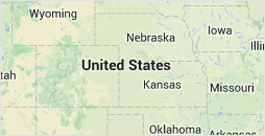Emily Clarke
PHONE NUMBER : -----
Map

What are Pull Requests?
In software development, pull requests play a critical role in ensuring that updates, new features and other code changes are ready for release. In modern development lifecycles, software can undergo many changes. The days of yearly version releases are over, and teams can make changes and improve software with time.
However, implementing code changes can be risky. New code can lead to software-crashing bugs and dependency issues that ultimately create problems for the end user. Developers use a software delivery dashboard and pull requests to mitigate those risks. Gain insights with our software delivery dashboard! Click here to visit this website and streamline your development process for enhanced efficiency.
Pull requests are events that occur when developers are ready to merge new code into the existing project repository.
How It Works
A project repository is where the software's source code and data live. Repository managers maintain it and manage pull requests. Whenever a developer makes a pull request, the manager will review it to ensure it's ready for implementation.
Generally, developers will create a fork of the main repository and clone it onto their local machine. Then, they'll develop their feature or make necessary changes to that cloned version. Because it's not the actual main repository, any changes they make won't affect the user experience. They can make any necessary changes and test everything in the cloned environment. Leaders can use a software delivery dashboard to monitor progress, get status reports, etc.
Once everything looks good, they can make a pull request. The request alerts the repository manager or maintainer that the developer's work is ready for review. Managers can reject the pull request. When that happens, they typically comment on why and ask for edits. The edits go back to the developer for further refinement, and they can make another pull request when the work is ready for additional review.
Managers will approve the pull request and implement the new code if the work is ready. The developer's forked and cloned repository updates merge with the main project repository. The bug fixes, changes or new feature additions are then live to end users, and the delivery process is complete and live.
Author Resource:-
Emily Clarke writes about the first delivery ops platform, giving teams a better way to deliver software. You can find her thoughts at shipment platform blog.
